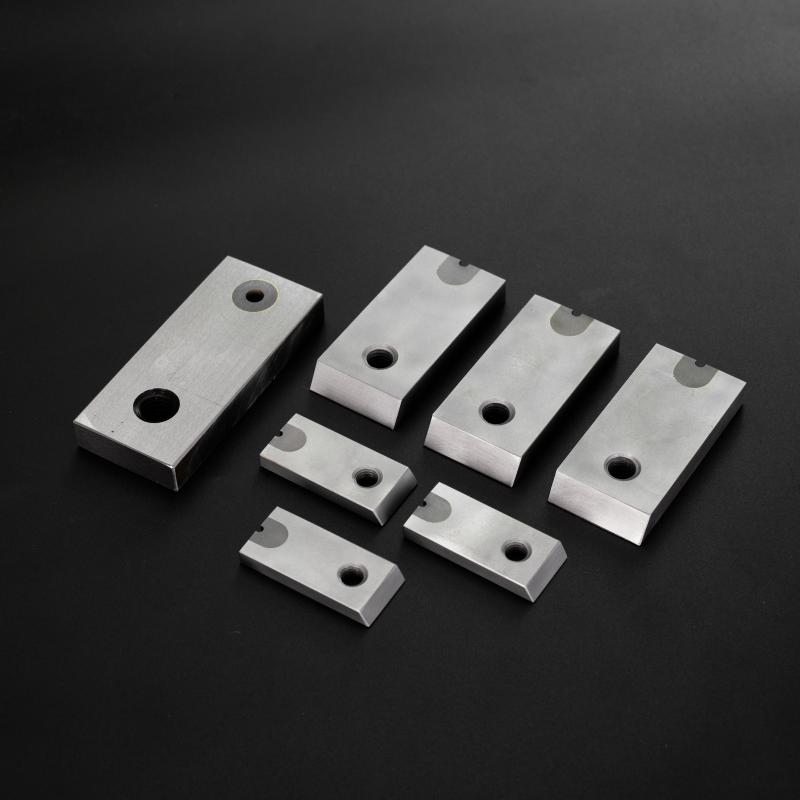 1. What is a Cut Off Blade?
1. What is a Cut Off Blade?
A Cut Off Blade is an abrasive cutting tool designed for precision cutting of various materials. These thin, circular blades are mounted on angle grinders, chop saws, or other power tools to perform fast, clean cuts through metal, concrete, masonry, and other hard materials. Modern Cut Off Blades typically consist of abrasive grains (such as aluminum oxide or silicon carbide) bonded with resins or other materials, reinforced with fiberglass mesh for safety and durability.
Key technical specifications of premium Cut Off Blades include:
Diameter range: 4" to 16" (100mm to 400mm)
Thickness: 0.040" to 0.125" (1mm to 3.2mm)
Maximum operating speed: 13,300 RPM for 4" blades, decreasing proportionally with diameter
Bond hardness: R (soft) to Z (extra hard) on the Mohs scale
Abrasive concentration: 30-50% by volume
2. Technical Characteristics with Performance Data
2.1 Material Composition
High-performance cut off blades use advanced abrasive formulations:
Aluminum oxide (Al₂O₃): 80-90% purity for general purpose cutting, hardness ~9 Mohs
Silicon carbide (SiC): For harder materials, offering 25% faster cutting speed than aluminum oxide
Zirconia alumina: Premium blend providing 40% longer life than standard aluminum oxide
Reinforcement: Dual fiberglass mesh with 1200N/mm² tensile strength
2.2 Cutting Performance Metrics
| Material | Cutting Speed (in/min) | Blade Life (linear feet) | Optimal RPM |
|---|---|---|---|
| Mild Steel (1/4") | 12-18 | 150-200 | 10,000 |
| Stainless Steel (1/4") | 8-12 | 80-120 | 8,500 |
| Cast Iron (1/4") | 15-22 | 200-250 | 9,000 |
| Concrete (2") | 4-6 | 50-80 | 6,500 |
2.3 Safety Features
Modern cut off blades incorporate multiple safety enhancements:
Burst speed rating: Minimum 1.5x maximum operating speed (e.g., 20,000 RPM for 13,300 RPM blade)
Vibration damping: Reduces vibration by 40% compared to standard blades
Reinforcement: Fiberglass mesh with 30% overlap for explosion resistance
3. Application Scenarios
3.1 Metal Fabrication
In metalworking shops, cut off blades with 0.045" thickness and zirconia alumina abrasive are preferred for cutting:
Structural steel (I-beams, channels up to 1" thick)
Pipe and tubing (2" diameter schedule 40 with clean 90° cuts)
Rebar (up to #8 size with minimal sparking)
3.2 Construction and Demolition
Heavy-duty 14" diameter blades with segmented rims are used for:
Concrete cutting (6" depth per pass with water cooling)
Asphalt pavement cutting (linear feet per hour productivity)
Brick and block cutting (precision cuts for masonry work)
3.3 Automotive and Aerospace
Specialty ultra-thin blades (0.032") with ceramic abrasives handle:
Exhaust system components (stainless steel with minimal heat input)
Aluminum chassis parts (clean cuts without material loading)
Titanium aircraft components (special low-iron formulations)
4. Maintenance and Care Procedures
4.1 Storage Best Practices
Proper storage extends blade life by up to 30%:
Store in original packaging until use
Maintain environment at 40-70% humidity and 50-80°F (10-27°C)
Stack horizontally with maximum 10 blades per stack
4.2 Mounting Procedures
Correct installation prevents accidents and ensures optimal performance:
Verify blade maximum RPM rating exceeds tool speed
Inspect for cracks or damage (magnified inspection recommended)
Use proper flange size (minimum 1/3 blade diameter)
Tighten nut to manufacturer's torque specification (typically 35-50 ft-lbs)
4.3 Usage Techniques
Proper cutting methods maximize efficiency and safety:
Maintain 15-30° cutting angle for most materials
Apply 5-15 lbs of feed pressure depending on material
Allow blade to reach full speed before contacting workpiece
Use intermittent cutting (10-15 seconds on, 5 seconds off) for heavy cuts
4.4 Dressing and Truing
Periodic maintenance maintains cutting performance:
Use dressing stick when cutting efficiency drops by 20%
True blade if runout exceeds 0.010" (0.25mm)
Clean resin-loaded blades with specialized wheel cleaners
4.5 End-of-Life Indicators
Replace blades when these conditions occur:
Diameter reduced by 1/4" (6mm) from original size
Visible cracks or segment loss exceeding 1/8" (3mm)
Cutting time increases by 50% compared to new blade
Excessive vibration (>2.5 m/s² measured at tool handle)











